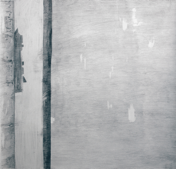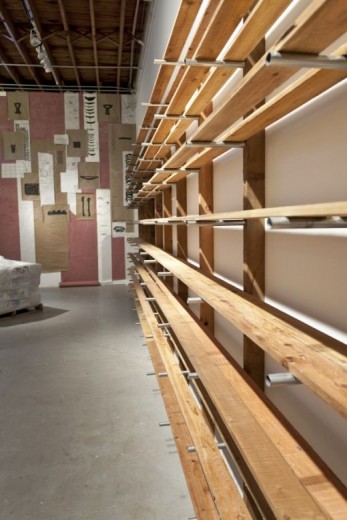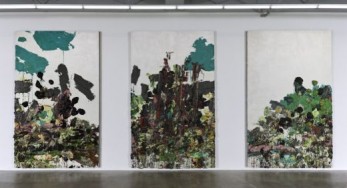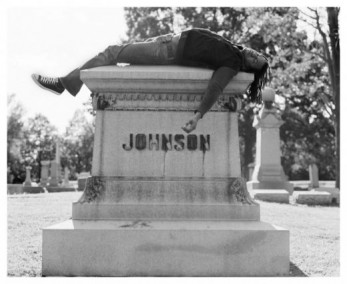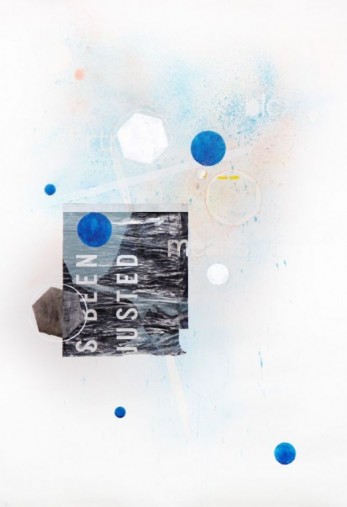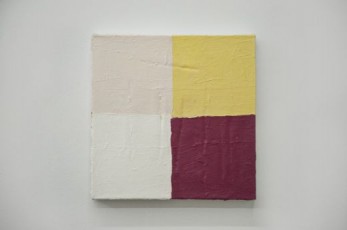Shanghai has, in the past few decades, transformed from a vast, grubby warehouse of poverty into one of the premier spaces for finance capital, with the accompanying luxury apartments, nightclubs, gyms, and lifestyle paraphernalia that that entails; the neighborhood in which the biennale is held hasn’t yet been hit by this wave, and it is unclear whether the “Reactivation” theme is intended to bring back the ghosts of the past, or clear them away more quickly.
But there were also a series of contingent factors. At the beginning, there was an apartment, a really shitty apartment, inside the space. There was no money for car rentals, so basically when artists came to work they were inside our lives. If there was a party we were going to, that’s where they were going. They just became grafted into your world and to the local scene. And so if you were going to play poker at someone’s house, he or she was going to go play poker, too. That was not a formal-artworld-dinner-with-a-board-member kind of thing.
While he and she consciously adhered to constructed systems of thought and representation, inevitably others emerged, making themselves self-evident within the texts and their structures. As she often points out, “This emergence is comparable to the regular process that underlies those dry conversations who goals become apparent over the course of what appears to be an idle exchange.”
Chicago-based artist Theaster Gates opened his first solo exhibition in Miami at Locust Projects this November. Soul Manufacturing Corporation transforms the gallery space into a site for the actual production of goods, making the labor of the artists who will work in the space available for public consumption. This project is the outgrowth of a practice that encompasses sculpture, painting, performance, singing, ceramics, and installation, alongside urban planning, construction, and community engagement. In anticipation, Gates and Diana Nawi, Associate Curator at the Miami Art Museum, exchanged emails and phone calls in late October of this year.
You smell the paintings in the back of your throat and try to take shallow breaths. The three 16-foot-tall oils strive upwards to the ideal of unsullied negative space. On average, the paintings weigh half a ton. The canvas at the top of the frames is stretched gale-taught. At the bottom, the weight of the paint has distended the surface to a slack edema. And while the triptych has the undeniable outline of a 山 (shan), the simplified character for mountain, the artist insists that it be displayed 3-2-1, with the peak still centered and the slopes switched. This choice, coupled with a palate of broad swathes of green littered with more muted industrial hues, evokes the cities surrounding the Yangtze that were abandoned and submerged during the earth-moving Three Gorges Dam project.
A central feature of many of his recent works, Johnson’s use of mirrors functions on multiple levels: reflecting the viewer, reflecting other works across the gallery, and offering windows of space inside which viewers can participate in alternate, duplicate, and distorted realities.
Invested in what we might call vernacularism, Adler Guerrier’s most recent solo exhibition, Here, Place the Lever at David Castillo Gallery, is a semiotic investigation and poetic rendering of the urban landscape of Miami.
Interested in sculptural problem solving, function, and fabrication, Moore reduces tables, hanging lights, and wall tiles to smart and basic forms. Computer rendering programs can allow for a certain level of fantasy: you can skew the perspective, apply surface treatments, select and perfect, just by sending commands.
This illusion in the paintings is the work, and through this illusion she performs an exit to the game. The basis for this is a very sensitive, refined and assertive gesture.In a simultaneously natural and forced manner, she covers the entire canvas with textural brush marks that look more like the residue of a glue stick than paint.



